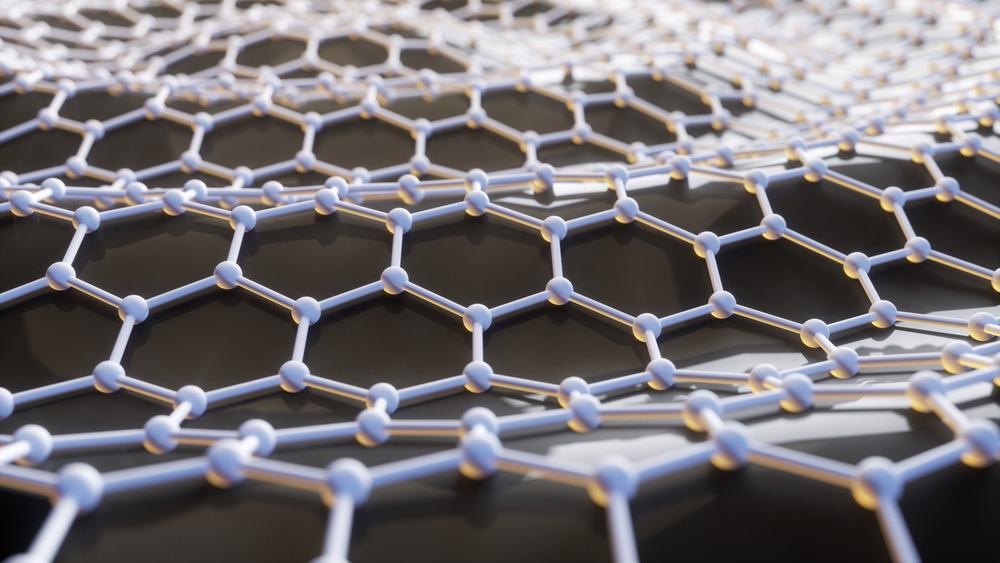In a study published recently in the Journal of Advanced Science, an in situ produced metal-organic framework (MOF)-based thermal treatment was used to create extremely porous N-doped carbon nanotubes (CNTs). The synthesized CNTs also comprised immersed Co nanoparticles over nano-fibrillated electrospun hollow carbon nanofibers, and have helped to address the mass-charge issue in asymmetrical supercapacitors.

Study: Homogeneous Elongation of N-Doped CNTs over Nano-Fibrillated Hollow-Carbon-Nanofiber: Mass and Charge Balance in Asymmetric Supercapacitors Is No Longer Problematic. Image Credit: OliveTree/Shutterstock.com
Supercapacitors and Their Limitations
Supercapacitors (SCs) are regarded as excellent products for relatively brief power storage due to their capacity to rapidly charge and discharge electric power, as well as due to their extremely high-power density and long-term cycle stability. Nevertheless, supercapacitors have significant restrictions, such as a lack of high capacitance.
The weak specific capacitance of carbon-based anode material limits the concurrent progress of three significant concerns of supercapacitors: high inductance, high power density, and high cyclability. The specific capacitances of typical carbon-containing anodes have been found to be primarily in the region of 100 – 500 F g–1.
To make mixed supercapacitors with a bigger potential frame and greater capacitance, thus a higher strength, three- to fivefold or even more anodic material is needed to cross the capacitance difference between the positive and negative active material, which might also restrict the device's energy density. As a result, it is impractical to equalize mass and charge throughout mixed supercapacitor device manufacturing.
Advantages of CNTs
Carbon nanotubes (CNTs) are a remarkable scientific and technological breakthrough, with expansive shapes and enhanced chirality that could be used in energy storage devices due to their high electron mobility, surface properties, excellent thermomechanical stability, and flexibility.
However, the appropriate design of carbon nanotubes using low-cost and simple methods remains a difficult issue. Many investigators have used synthetic methods for this purpose. Nonetheless, these approaches complain about high manufacturing costs, a shortage of regulated assembling, and electrochemically active molecular restriction inside the carbon structure.
Salient Features of the Research Methodology
Highly porous N-doped carbon nanotubes (N-CNTs) spread out over an N-doped carbon nanofibrous material were created, resulting in incredibly high capacitance. A remarkable chemical procedure was employed to create versatile carbon nanotubes-grown carbon nanofiber mats that could be used as open electrodes for supercapacitors.
To increase capacitance and power storage, a viable technique was proposed that had no negative impacts on carbon nanofiber (CNF)-based carbon materials. It did not require the addition of significant pseudo-capacitors. It was important to note here that increasing the pseudo-capacitance by inserting several functional groups reduced the substance's durability and conductance.
The synthesized methodology enhances the specific surface area by optimizing the porous structure and dispersion and adding an optimal quantity of hetero-elements and metal nanoparticles (NPs) inside enlarged carbon nanotubes and base carbon nanofibers as particle centers for cation assimilation.
The present synthesis approach was replaced with a simple and affordable situ-grown metal-organic framework (MOF)-based thermal treatment methodology that did not need any sophisticated or costly apparatus or extra preparations.
After that, the specimens were analyzed as supercapacitors both in symmetrical and asymmetrical systems. The optimized sample's outstanding capacitive addressed the subject of mass and charge balancing among positive and negative electrodes in unsymmetrical supercapacitors, paving the way for the fabrication and commercialization of adaptable and compact high-performance symmetric supercapacitors.
Highlights of the Study
An effective chemical curing method was used to effectively synthesize high porosity N-carbon nanotubes extended out on N-doped nano-fibrillated and empty carbon nanofibers, resulting in highly configurable carbon nanotubes-grown carbon nanofiber mats. This material was then utilized as the loose electrode for supercapacitors and presented a remarkably high capacitance.
A simple and low-cost in situ-grown metal-organic framework-based thermal treatment methodology was applied, with no sophisticated or costly apparatus, or extra intermediates, as was formerly used in current synthesis procedures.
The as-prepared carbon nanotube has the greatest Cs value of any carbon material recorded so far. Because of the increased capacitive reactance supplied by carbon-containing negative electrodes with the vast bulk of electrochemical double-layer capacitance, it was possible to develop non–symmetric supercapacitor equipment with a volume of positively and negatively charged electrode materials.
A multilayer design of an adaptable all-solid-state SSC apparatus using a PVA/KOH solution as an electrolytic was also created. As a result, it was envisaged that this discovery could generate new avenues for building negative electrocatalysts that only deliver extremely high capacitance in non-symmetric supercapacitors with high energy density simultaneously.
On the other part, the researchers were also able to effectively manufacture a versatile symmetrical supercapacitor device with a decent energy density, which may be useful in illuminating a flexible electronic future.
Reference
Kim, T., Subedi, S. et al. (2022). Homogeneous Elongation of N-Doped CNTs over Nano-Fibrillated Hollow-Carbon-Nanofiber: Mass and Charge Balance in Asymmetric Supercapacitors Is No Longer Problematic. Advanced Science. Available at: https://onlinelibrary.wiley.com/doi/10.1002/advs.202200650
Disclaimer: The views expressed here are those of the author expressed in their private capacity and do not necessarily represent the views of AZoM.com Limited T/A AZoNetwork the owner and operator of this website. This disclaimer forms part of the Terms and conditions of use of this website.